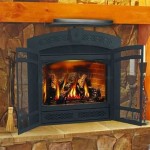Stone Age Fireplaces: A Hearth of Innovation and Community
The Stone Age, a vast and pivotal period in human history, is broadly divided into the Paleolithic (Old Stone Age), Mesolithic (Middle Stone Age), and Neolithic (New Stone Age). During these epochs, early humans transitioned from nomadic hunter-gatherers to settled agriculturalists. A central element facilitating this transition, and indeed shaping the very course of human development, was the controlled use of fire, and the architectural manifestation of that control: the fireplace.
The invention and strategic application of fire marked a significant turning point in human evolution. Initially, it is believed early hominids encountered fire naturally, perhaps from lightning strikes or volcanic activity. Learning to maintain and later create fire required observation, experimentation, and the meticulous transfer of knowledge across generations. The establishment of a designated area for fire – the precursor to the modern fireplace – provided not only practical benefits but also served as a crucial focal point for social cohesion and cultural development.
Archaeological evidence suggests the earliest hearths consisted of simple depressions in the ground, often lined with stones to contain the fire and prevent its spread. Over time, these rudimentary fireplaces evolved, reflecting advancements in understanding of fire management and adaptation to diverse environmental conditions. The study of these ancient hearths provides invaluable insights into the daily lives, social structures, and technological capabilities of Stone Age peoples.
The Practical Applications of Stone Age Fireplaces
The primary function of a Stone Age fireplace was, of course, to provide warmth. During periods of glacial advance and fluctuating climates, the ability to generate and maintain fire offered protection against the elements, enabling human populations to inhabit colder regions and extend their geographical range. Beyond simple warmth, the controlled heat supplied by fireplaces allowed for the drying of animal hides, the manufacture of clothing, and the crafting of tools from materials that required heating or tempering. Fire was an essential component for survival during harsh winters and unpredictable weather patterns.
Beyond providing warmth and aiding in manufacturing, fire played a crucial role in food preparation. The ability to cook food significantly improved its digestibility, nutritional value, and safety. Cooking eliminated harmful bacteria and parasites, making previously inedible foods safe for consumption. Roasted meats and vegetables were far more easily digested than their raw counterparts, allowing early humans to extract more nourishment from their diet. This enhanced nutrition contributed to improved health, increased life expectancy, and the overall well-being of Stone Age communities.
The light produced by a fire provided another significant advantage. Extended periods of darkness, particularly in caves and during winter months, limited activity and presented dangers from predators. A fireplace offered a source of illumination that extended the day, allowing for the continuation of essential tasks such as toolmaking, weaving, and food preparation. The light also provided a measure of security, deterring nocturnal animals and allowing for improved visibility within the living space.
The Social and Cultural Significance of the Hearth
The Stone Age fireplace was much more than a simple source of heat and light; it served as a central gathering place for social interaction and cultural transmission. Around the fire, families and communities congregated after a day of hunting and gathering. This shared space facilitated storytelling, the sharing of knowledge, and the reinforcement of social bonds. The fireplace fostered a sense of communal identity and belonging, strengthening the group's cohesion and resilience.
Oral tradition, a cornerstone of Stone Age culture, thrived around the fireplace. Stories, myths, and legends were passed down from one generation to the next, preserving cultural heritage and transmitting essential survival skills. The elders of the community, often seated closest to the fire, held a position of authority and respect, acting as keepers of knowledge and guiding the community's actions. The fireplace provided a natural setting for these intergenerational exchanges, ensuring the continuity of cultural traditions.
Ritualistic practices were often associated with the fireplace. Fire itself held symbolic significance, representing life, energy, and transformation. Ceremonies and rituals may have been performed around the hearth, marking important events such as births, deaths, and seasonal changes. The hearth served as a sacred space, connecting the community to the natural world and reinforcing their spiritual beliefs. The placement and design of the fireplace may have also reflected cosmological understandings, linking the human world to the larger universe.
Evolution and Diversity of Stone Age Fireplace Design
The design and construction of Stone Age fireplaces varied considerably depending on the available resources, environmental conditions, and cultural practices of different communities. The Paleolithic period saw the development of simple hearths, often little more than shallow depressions in the ground. These early fireplaces were typically located within caves or rock shelters, providing protection from the elements. The use of stones to line the fire pit became increasingly common, helping to contain the fire and improve its efficiency.
As humans transitioned into the Mesolithic period and began to establish more permanent settlements, fireplace design became more sophisticated. Hearths were no longer confined to caves but were also constructed in open-air dwellings. The use of clay and other binding materials allowed for the creation of more durable and insulated fireplaces. Some Mesolithic fireplaces even incorporated rudimentary chimneys or ventilation systems to improve airflow and reduce smoke accumulation within the living space.
The Neolithic period, with its emphasis on agriculture and settled living, witnessed further advancements in fireplace technology. Houses became more complex, often incorporating multiple rooms and dedicated spaces for cooking and heating. Fireplaces were integrated into the architectural design of the dwelling, sometimes featuring raised hearths and elaborate stone surrounds. Evidence suggests that Neolithic communities also experimented with different types of fuel, such as wood, dung, and plant matter, to optimize the efficiency of their fireplaces. The diversification of fireplace design during the Neolithic period reflects the increasing technological sophistication and cultural diversity of Stone Age societies.
The presence of associated artifacts surrounding Stone Age fireplaces provides further clues about their use and significance. Tools for food preparation, such as grinding stones and cooking pots, are often found near hearths, confirming their role in food processing. Charred animal bones and plant remains offer insights into the diet of Stone Age peoples. The discovery of ornaments and decorative items near fireplaces suggests that these spaces held cultural and symbolic importance, not only for basic survival but also for expressive cultural practices. These archaeological finds contribute to a more complete understanding of the daily lives and social interactions that revolved around the Stone Age fireplace.
In conclusion, the Stone Age fireplace was far more than a simple source of warmth and light. It served as a crucial technological innovation that facilitated human adaptation to diverse environments, improved nutrition, and fostered social cohesion. The hearth was a center for communal gathering, cultural transmission, and ritualistic practices. The evolution and diversification of fireplace design throughout the Stone Age reflect the increasing technological sophistication and cultural diversity of early human societies. The study of these ancient hearths offers invaluable insights into the history of humanity, revealing the ingenuity, adaptability, and enduring spirit of our Stone Age ancestors.

Modular Masonry Fireplaces Ovens Kitchen Islands And Outdoor Living Kits Stone Age Manufacturing

Stone Age Fireplace Standard Series Atlantic Mulch

Contractor Series Fireplace 24 Stone Age Manufacturing

Stone Age Manufacturing 18 Inch Veranda Diy Outdoor Fireplace Kit

Stone Age Manufacturing 48 Contractor Series Fireplace With Arched Li Mack And Sons Supply

Standard Series Fireplace 48 Stone Age Manufacturing

Bi State Landscape Supply

Stone Age Manufacturing 36 Standard Series Fireplace With Straight Li Mack And Sons Supply

Stone Age Manufacturing 24 Patio Series Outdoor Fireplace With Straight Lintel

New Age Series Fireplaces Stone Manufacturing








